Company
Stollenwerk offers the range of transport and storage solutions for emergency services. Our products are used on every continent. Quality assurance and continuous product improvement stand for innovation with tradition in the 100 year history of Stollenwerk in Cologne.
Since the beginning Stollenwerk products are centered on ergonomics, ease of use and robustness. Get an overview of the company history by clicking on a milestone in the timeline.
1919
The company was founded in Cologne, Germany by Hans Stollenwerk in 1919. The factory started off producing handmade motor vehicles. The advancing industrialization and successive automation of the automotive sector led the firm to an increased attention on special vehicles like ambulances. This attention was fostered by the experience that Hans Stollenwerk made with insufficient transportation solutions for wounded soldiers. It ignited the spark to gradually become a quality supplier of rescue equipment. The production shortly extended its reach to equipment like stretchers, mounting material and racks. Several patens built the foundation for supplying ministries and rescue organizations with innovative products. The emergency transport trailer „Original Stollenwerk“ is one example, which served as the ideal patient transport solution at that time.
1930
During the early 1930s, the company moved to Potsdam-Babelsberg, near Berlin. Soon the company developed more patents like a special mounting system, which was able to transform every vehicle into an ambulance within a short period of time. Along the core production, which was now centered merely on equipment, Stollenwerk produced camp beds and mobile camp kitchens for paramedics.
1956
In 1956 Hans Stollenwerk rebuilt the company in Cologne after the production facility in Potsdam-Babelsberg was totally destroyed. The company’s know-how and experience allowed a quick recovery in the field of rescue transport solutions. Soon, it developed a new stretcher for the German military, which fulfilled and surpassed all strict requirements. One new feature was a distinct polyethylene fabric that was developed in cooperation with Dr. Fischer, chemist with Dynamit-Nobel. This all new material was not absorbing any fluids, breathable, chemical resistant and flame retardant.
1959
Development of the „Hälftengleichen Trage“ according to Stanag 2040. At the same time occurred the development and production of the series 75, 80 and 99. This was followed by the medical and disaster protection stretcher according to DIN 13024. For the first time, Stollenwerk used aluminum as central elements of a lightweight production series. This reduced the overall weight to just over 6 kg.
1969
Development of the stretcher support model 60, which was designed to be assembled rapidly and to position patients for medical treatment on any terrain. It holds all stretchers according to the DIN 13024. Today the model 60 is used by medical services of the military forces like field hospitals or in nautical contexts like ships or platforms
1970
The founder Hans Stollenwerk passed away in 1970 and his son Wilhelm Hans Stollenwerk carried on the company. Until 1987, the company produced primarily for the civil disaster protection in Germany and Europe. Main customers were state authorities.
Development and presentation of a fully equipped first aid room for production facilities.
1988
Development of the carriage 2870 DIN 13043 for the stretcher according to DIN 13025. The goal was to develop a carriage that could be fixated by the standard four point fixation system in ambulances.
The result was a revolutionary lightweight concept, which convinced by robustness and ease of handling. A special feature were the separately lockable legs that allowed an easy roll-in loading and unloading of the system in the ambulance.
1991
Development of the stretcher model 3000 according to DIN 13025. The following model 3002 was the first stretcher to have a patented gas spring that supports the adjustable back rest. To increase the handling of the stretcher for the user and the comfort for the patient, the models 3003, 3006 and 3008 were developed.
The last evolution of the stretcher, the 3008, allows a fully gas spring supported patient positioning. In this model back, footrest and abdominal wall relief are reinforced by gas springs.
1994
To increase the daily work routine ergonomics for the public rescue sector, the carriage model 2870 was updated to the series 4000. This version offered large improvements in the everyday workflow routine of a paramedic, as it allowed 6 adjustable height positions. All of which are supported by gas springs in the upward movement to ease the lifting process. Another effort included the compatibility to platforms in ambulances, which was achieved with the monobloc system.
The model 4000 was followed by the models 4002 and 4003. Additional extendable handles at the head end and a redesign of the front leg drastically improved the ergonomic features of the system.
1995
Hans Wilhelm Stollenwerk passed away in 1995. His two sons Achim and Thomas Stollenwerk carry on the family business in the third generation. Major clients today are rescue organizations, as well as municipal and private rescue services – throughout Europe. Achim Stollenwerk is an active member in the Standards Committee of hospital emergency services (NARK).
2000/01
The structure of the stretcher and the carriage is constructional enforced, to comply with the brand new DIN EN 1865 and DIN 1789. The system proves itself in a crash test: 10 g in every direction, forwards, backwards, sideways and vertical.
The Stollenwerk rescue system demonstrates to withstand the dynamics of the crash test according to DIN EN 1789 on a commercial available platform, without any extra support and under supervision of the TÜV-Rheinland. The first DIN EN 1789 dynamically tested carriages and stretchers are produced and delivered during the year 2001.
Test certificate of the TÜV-Rheinland as PDF (1,8 MB).
2008
Stollenwerk transfers its know-how in transportation to the funeral services. In this field many operations follow a similar work routine of lifting, loading and unloading. A new patented device enables the transportation of a coffin and a transfer stretcher on one carriage. This enables users in the funeral services ergonomic working conditions in most encountered situations.
One topic in the field of rescue and ambulance transport is more weighty patients. As a reaction, Stollenwerk developed two models 5000 and 5010 that have a loading capability of 500 kg. The model 5000 is fully DIN 1865 compatible and can be mounted on the standard stretcher 4000 series.
2011
The customer profile of Stollenwerk comprises rescue organizations, municipal and private rescue services, as well as ministries –international.
The new factory site close to the original location emphasizes the company’s vision of quality and sustainability. Development and production remain in Germany and look into a future of customer-oriented responsibility, reliability and precision.
2014
Development and introduction of the 6001 carrying chair. The aluminum/magnesium construction is the first carrying chair to combine passive and active safety elements.
The chair passes the 10g test according to EN1789 with test dummy and the ECE R17 test for registration according to M1 classification. This makes it safe for patients and caregivers alike. And this at lightweight.
2017
The further development of the 6001 to the 6003 model includes a stair module that can be clicked on if required. This allows patients to be transported down the stairs with back relief. At the same time, the 6003 chair without the adapted stair module has good handling and only slightly more weight than the 6001.
2022
The further development of the CPS system produces a loading unit with significant weight savings. The model 7510 saves almost 50% weight. As part of the approval process, the new Model 7510 and also the Model 7500 have been successfully tested to EN1789:2020 and additionally also to AS/NZS 4535:1999. Another milestone in passive safety for patients and caregivers.

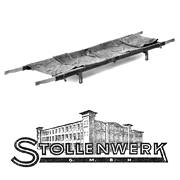
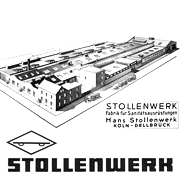
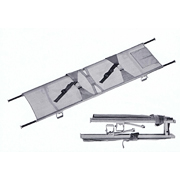
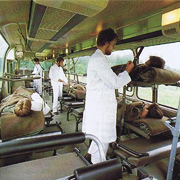
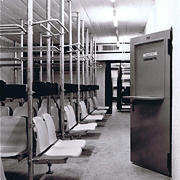
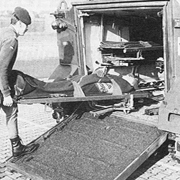
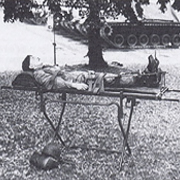
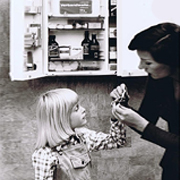
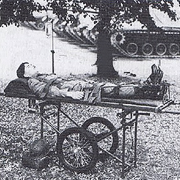
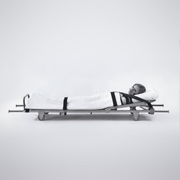

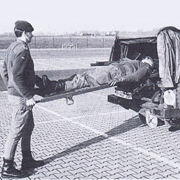
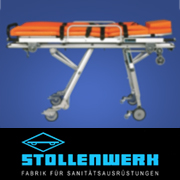
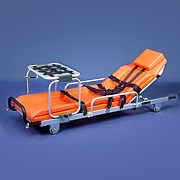
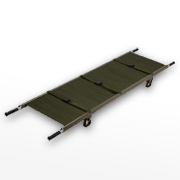
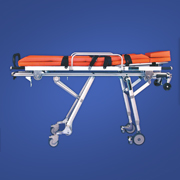

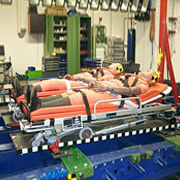

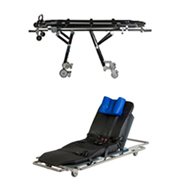
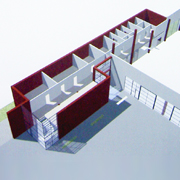
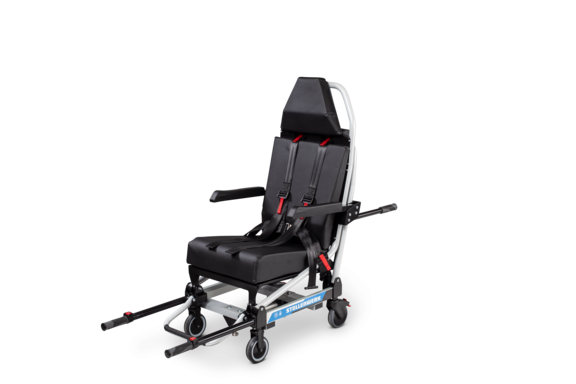
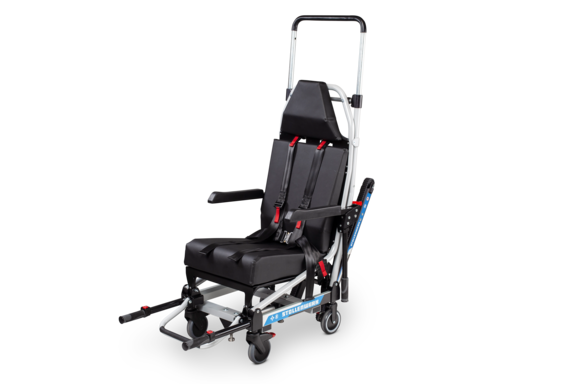
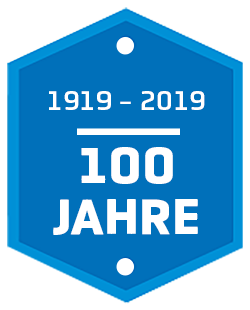


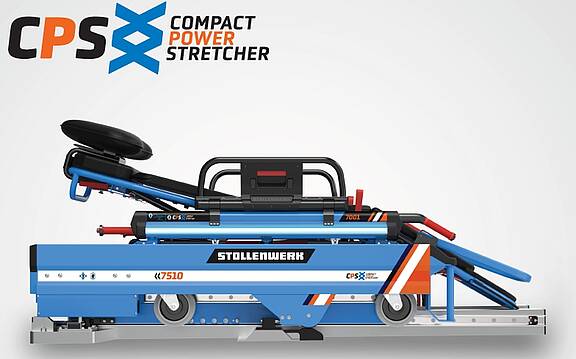
 Comfort carrying chair 6001
Comfort carrying chair 6001  Comfort carrying chair 6003
Comfort carrying chair 6003  4512 - Stretcher system foiling
4512 - Stretcher system foiling  Manual stretcher systems
Manual stretcher systems  4600 - Ergonomic loading wheel
4600 - Ergonomic loading wheel  3200 - Headrest extension
3200 - Headrest extension  3320 - Headrest extension
3320 - Headrest extension  4440 - Universal tray
4440 - Universal tray  001 RB - Roll-board
001 RB - Roll-board  4312 - Instrument bridge
4312 - Instrument bridge  4410 - Lateral DIN rail
4410 - Lateral DIN rail  4411 - Head side DIN rail
4411 - Head side DIN rail  4362 - IV pole
4362 - IV pole  4363 - pole with DIN rail
4363 - pole with DIN rail  4364 - Multi-IV pole
4364 - Multi-IV pole  3300 - Stretcher mattress
3300 - Stretcher mattress  EN-[C] - Mattress
EN-[C] - Mattress  3325 - Multifunction pillow
3325 - Multifunction pillow  3315 - Vacuum pillow
3315 - Vacuum pillow  006 K - Cavity pillow
006 K - Cavity pillow  3060 - Baby & child restraint system
3060 - Baby & child restraint system  3065 - Storage case for baby & child restraint system
3065 - Storage case for baby & child restraint system  EN-02-[C] - Child restraint system
EN-02-[C] - Child restraint system  410 - Static restraint system
410 - Static restraint system  3045-A - 5-point restraint system
3045-A - 5-point restraint system  4420-C3 - C3 defi. mounting
4420-C3 - C3 defi. mounting  4420-PH - C3 patient box mounting
4420-PH - C3 patient box mounting 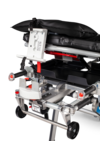 4420-KV - C3 patient box mounting
4420-KV - C3 patient box mounting  4450 - Zoll X-Series mounting
4450 - Zoll X-Series mounting  4460 - Universal bracket
4460 - Universal bracket  4460-S - 2 x universal bracket
4460-S - 2 x universal bracket 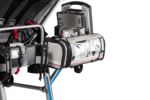 4460-WB1 - Life Base 1 mounting
4460-WB1 - Life Base 1 mounting  4460-C3-10G - C3 defi. mounting
4460-C3-10G - C3 defi. mounting  4460-BOX - C3 patient box mounting
4460-BOX - C3 patient box mounting  4460-C3 - C3 defi. mounting
4460-C3 - C3 defi. mounting  4460-WB3 - Life Base 3/4 NG mounting
4460-WB3 - Life Base 3/4 NG mounting  4460-WACC - ACCUVAC mounting
4460-WACC - ACCUVAC mounting  4410-X1S – Single Space mounting
4410-X1S – Single Space mounting  4410-X2S - Double Space mounting
4410-X2S - Double Space mounting  4410-X1CP - Single Compact Plus mounting
4410-X1CP - Single Compact Plus mounting  4500 - Fixation system for carriages
4500 - Fixation system for carriages  6500-M - Floor fixation unit with manual release
6500-M - Floor fixation unit with manual release  6500-M-T - Floor fixation unit with manual release
6500-M-T - Floor fixation unit with manual release  6500-E - Floor fixation unit with electronic release
6500-E - Floor fixation unit with electronic release  6500-E-K - Floor fixation unit with electronic release
6500-E-K - Floor fixation unit with electronic release  Stretcher support - Model 60
Stretcher support - Model 60  Packing box - Model 66
Packing box - Model 66  Stretcher 75
Stretcher 75  Stretcher 80
Stretcher 80  Stretcher 4210
Stretcher 4210  Carriage 480
Carriage 480